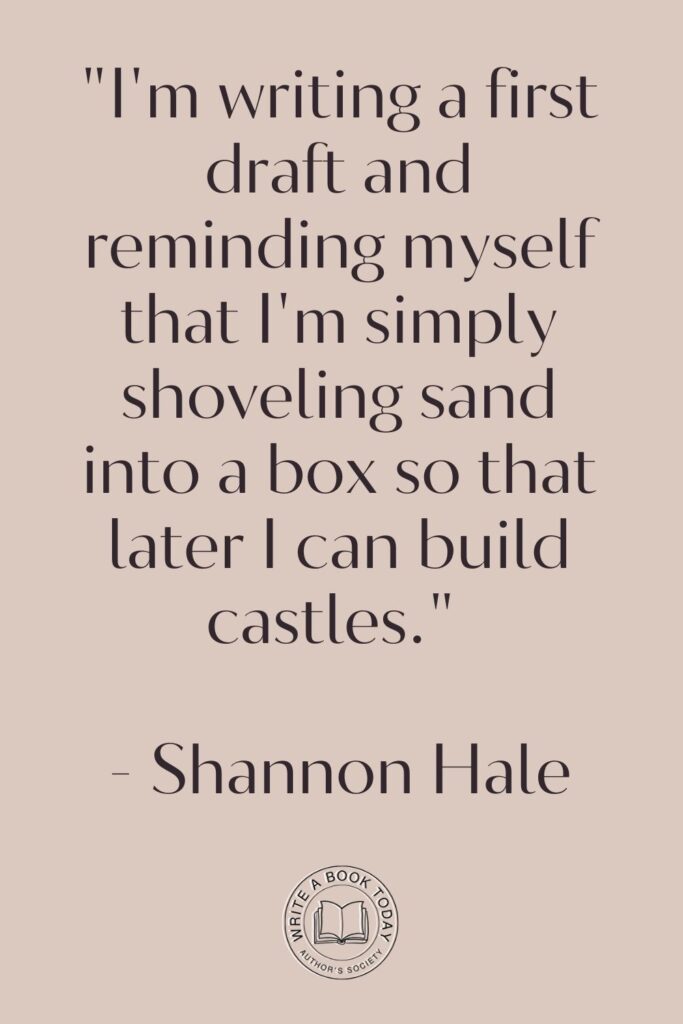Have you ever turned the last page of a book only to be struck by an unexpected twist that left your mind reeling?
The art of writing denial is like a magician’s sleight of hand, where the audience’s attention is so skillfully misdirected that they never see the surprise coming. In the world of creative writing, crafting denial is a powerful tool that can transform your narrative into an unforgettable experience.
This guide will delve into six ingenious methods to weave denial into your stories, keeping readers on the edge of their seats and eagerly flipping pages.
Understanding Denial in Storytelling
Denial is not just a river in Egypt—it’s a potent storytelling technique that, when wielded with finesse, can elevate a narrative to new heights.
By exploring the psychology behind denial and its effectiveness in storytelling, we can uncover why this method captivates audiences and keeps them engaged.
Feeling lost with your debut novel?
Fiverr Pro connects you with expert editors, designers, and marketers – everything you need to get your book ready for success!

The Psychology Behind Denial
At its core, denial taps into the intricate workings of the human mind. The cognitive dissonance occurs when characters- or even readers—refuse to accept reality.
This psychological mechanism often creates tension, as characters grapple with their inner conflicts or external pressures. Denial can manifest in various ways, from a character ignoring glaring truths to the subtle avoidance of uncomfortable emotions.
For instance, a protagonist might be blind to a friend’s betrayal, clinging to the belief that loyalty still exists. This refusal to acknowledge the truth adds layers to the character’s development and deepens the plot. The reader becomes complicit in the protagonist’s journey, experiencing the turmoil and eventual revelation alongside them.
To effectively use denial, consider the motivations driving your character’s behavior. Are they avoiding pain, protecting someone, or hiding from their own flaws? Understanding these motives can help you craft a more believable and engaging narrative.
Why Denial Works in Narratives
Denial functions as a narrative device because it aligns with a fundamental aspect of human nature: the reluctance to face uncomfortable truths.
When readers encounter characters who exhibit denial, they often empathize, as they too have experienced moments of self-deception. This shared experience creates a connection between the audience and the story, making the eventual confrontation with reality all the more impactful.
Moreover, denial introduces an element of suspense. Readers are often aware of the truth long before the characters, creating dramatic irony that heightens anticipation. As the narrative unfolds, the tension builds, leading to a cathartic release when the truth is finally revealed.
Incorporate denial by gradually revealing hints and clues throughout the story. This approach allows readers to piece together the truth while maintaining the element of surprise when the full picture is finally unveiled.

Crafting Effective Denial Techniques
Now that we’ve explored the psychological underpinnings of denial, let’s dive into practical techniques for incorporating this device into your storytelling. These methods will help you create narratives that are both compelling and unpredictable.
Subtle Foreshadowing
Foreshadowing is the art of planting seeds that hint at future events without giving away the plot.
When used subtly, it can reinforce the theme of denial, as characters remain oblivious to the signs that readers may pick up on. This technique requires a delicate balance; the clues should be noticeable enough to intrigue readers but not so obvious that they spoil the surprise.
Consider a scene where a character dismisses an offhand comment that foreshadows a major plot twist. The reader might recognize the significance, but the character’s denial keeps them in the dark. This creates a sense of foreboding that lingers in the background, enhancing the narrative’s depth.
When using foreshadowing, focus on details that can be interpreted in multiple ways. This ambiguity allows readers to engage with the story on different levels, piecing together the puzzle as they progress.
Google Docs is for notes. Scrivener is for novels. Upgrade your writing game and try it for free today!

Misdirection and Red Herrings
Misdirection is the magician’s favorite trick and works wonders in storytelling. You can create a narrative that surprises and delights by directing the audience’s attention away from the truth.
Red herrings—false clues that lead readers astray—are an effective way to achieve this. They keep readers guessing and add complexity to the plot. Imagine a mystery novel where the protagonist is convinced that a particular character is the culprit. T
he evidence seems overwhelming, but it’s all a cleverly constructed facade. The real antagonist lurks in the background, their actions masked by the protagonist’s denial and the strategic placement of red herrings.
Here’s a simple table to illustrate the difference between foreshadowing and red herrings:
| Technique | Purpose | Outcome |
|---|---|---|
| Foreshadowing | Hints at future events | Builds suspense and anticipation |
| Red Herrings | Misleads the audience | Creates surprise and misdirection |
Layering Character Motivations
Complex characters are the heart of any great story, and their motivations can be a fertile ground for denial. By layering motivations, you can create characters whose actions are driven by conflicting desires. T
his internal struggle often leads to denial, as characters grapple with choices that challenge their beliefs or values.
For example, a character might deny their feelings for someone due to a past trauma, creating a rich tapestry of emotional conflict. As the story progresses, these layered motivations come to light, providing depth and nuance to the narrative.
Readers are drawn into the character’s internal battle, eager to see how it will resolve.
Creating Unreliable Narrators
An unreliable narrator is a master of denial, weaving a narrative that challenges the reader’s perception of reality. These narrators present their version of events, leaving readers to question what is true and what is a product of the narrator’s deception or self-delusion.
This technique can add intrigue and complexity to your story, as readers become detectives, piecing together the truth. Take, for instance, a story told from the perspective of a character with selective memory.
Their account of events is colored by their biases and omissions, creating a narrative riddled with denial. As readers navigate this labyrinth of half-truths, they are compelled to question everything, leading to a more immersive reading experience.

Utilizing Plot Twists
Plot twists are the ultimate payoff for a well-crafted narrative of denial. They deliver that “aha” moment when everything clicks into place, leaving readers astounded by the cleverness of the storytelling. You can ensure your plot twists pack a punch by building suspense and executing the perfect reveal.
Building Suspense with Denial
Suspense is the lifeblood of any gripping narrative, and denial is a potent tool for creating it. You can keep readers on the edge of their seats by withholding key information or allowing characters to remain in denial.
The tension mounts as the story progresses, culminating in a climactic moment that delivers a satisfying payoff. Consider a thriller where the protagonist is convinced of their innocence, despite mounting evidence to the contrary.
The reader is privy to clues that the protagonist denies, creating a sense of impending doom. This suspenseful buildup keeps readers hooked, eager to see how the protagonist will confront the truth.
Executing the Perfect Reveal
The reveal is the moment when the veil of denial is lifted and the truth is laid bare. Timing is crucial to executing this effectively. The reveal should come at a point in the narrative where it has the most impact, often during a climactic scene that ties together the story’s threads.
For a reveal to resonate, it must be both surprising and inevitable. Readers should feel they could have seen it coming if only they had paid closer attention. This balance is achieved through careful planning and meticulous narrative crafting, ensuring the reveal feels both earned and satisfying.
When planning a reveal, consider your characters’ emotional journeys. How does the truth impact them, and how do they react? This emotional depth can enhance the power of the reveal, making it more memorable for readers.
No marketing platform? No social following? No problem!
Publisher Rocket helps you market your debut novel like a pro.
It’s a gamechanger for debut authors – try it today!


Examples of Denial in Popular Literature
To truly grasp the power of denial in storytelling, it’s helpful to examine its use in popular literature and media. By analyzing classic novels and modern examples in TV and film, we can see how skilled authors and creators harness this technique to craft unforgettable stories.

Analyzing Classic Novels
Classic literature is rife with examples of denial, as authors have long recognized its potential to add depth and intrigue to their narratives.
Take, for instance, the character of Jay Gatsby in F. Scott Fitzgerald’s “The Great Gatsby.” Gatsby’s denial of his past and his obsession with an unattainable future drive the story’s tragic arc, captivating readers with its poignant exploration of the American Dream.
Similarly, in Charlotte Brontë’s “Jane Eyre,” the character of Mr. Rochester grapples with denial as he conceals a dark secret. This denial creates tension and suspense, as readers are drawn into Jane’s journey to uncover the truth. These classic examples demonstrate how denial can be woven into the fabric of a narrative, enriching its complexity.
Modern Examples in TV and Film
In contemporary media, denial continues to be a powerful storytelling device. TV shows like “Breaking Bad” and “Mad Men” expertly employ denial to create multi-layered characters and intricate plots.
Walter White’s denial of his moral descent and Don Draper’s refusal to confront his past are central to their respective narratives, driving the tension and drama that captivate audiences.
Films such as “Shutter Island” and “Inception” also make use of denial to create mind-bending plots that leave viewers questioning reality. The protagonists’ struggles with denial add depth and intrigue, making these films memorable experiences that linger in the audience’s mind long after the credits roll.
Tips for Implementing Denial in Your Own Writing
Now that we’ve explored the theory and examples of denial in storytelling, it’s time to put these insights into practice. Here are some tips to help you effectively incorporate denial into your own writing, enhancing your narratives and keeping readers engaged.
Experimenting with Narrative Styles
One way to integrate denial into your writing is by experimenting with different narrative styles. First-person narratives, for example, allow for a more intimate exploration of a character’s denial, as readers experience their thoughts and emotions firsthand.
Alternatively, limited third-person perspectives can provide a broader view of the story while delving into a character’s internal struggles.
By playing with narrative styles, you can find the one that best suits your story and enhances the theme of denial. This experimentation can lead to fresh and innovative storytelling, inviting readers to engage with your narrative in new and exciting ways.

Engaging Readers Through Curiosity
Curiosity is a powerful motivator for readers, and denial can be used to pique their interest and keep them invested in your story. By strategically withholding information or presenting conflicting viewpoints, you can create a mystery that compels readers to keep turning the pages.
As you build your narrative, consider how denial can create questions that linger in the reader’s mind. This curiosity will drive them to seek answers, immersing them in the world you’ve created and encouraging them to explore the depths of your story.
Introduce intriguing elements early in the story and develop them gradually to keep readers curious. This slow reveal creates a sense of anticipation, making the eventual payoff more satisfying.
Final Thoughts on Writing Denial
Writing denial is an art form that requires a deft touch and a keen understanding of human nature. You can craft narratives that captivate and surprise by employing techniques such as subtle foreshadowing, misdirection, and the creation of unreliable narrators.
Whether you’re drawing inspiration from classic literature or modern media, the power of denial lies in its ability to create suspense, deepen character development, and deliver unforgettable plot twists. As you embark on your own storytelling journey, remember that denial is a versatile tool that can be adapted to suit your unique voice and style.
By experimenting with different approaches and embracing the creative possibilities of denial, you can create stories that resonate with readers and leave a lasting impression. So go forth, and let the magic of denial transform your narratives into masterpieces that keep audiences guessing until the very end.








